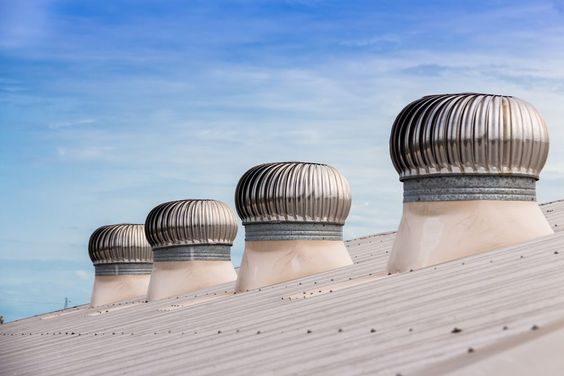Proper ventilation is crucial for maintaining a comfortable and healthy environment in industrial, commercial, and residential spaces. One of the most effective ways to improve airflow and reduce heat buildup is by installing an air ventilator turbo on your roof. These energy-efficient devices work without electricity, relying on natural wind power to expel hot air, moisture, and pollutants. In this blog, we will explore the benefits of turbo ventilators on your roof and understand the working principle of turbo air ventilator systems.
Working Principle of Turbo Air Ventilator
Turbo ventilators function based on a simple yet effective mechanism. They are designed with a series of specially engineered vanes that rotate when exposed to wind. As the turbine spins, it creates a suction effect that draws out stale, hot, and contaminated air from within the building. This natural process enhances ventilation, improves air quality, and reduces heat accumulation without the need for external power sources. Even in low wind conditions, the stack effect (temperature difference between indoor and outdoor air) helps maintain consistent air movement.
Benefits of Turbo Ventilators on Your Roof
1. Energy-Efficient & Cost-Effective
One of the biggest advantages of turbo ventilators is their ability to function without electricity. They harness wind power, making them an eco-friendly and cost-effective alternative to electrical ventilation systems. Once installed, they operate continuously with zero running costs.
2. Improved Air Circulation & Indoor Air Quality
Turbo ventilators help remove stale air, humidity, and pollutants from enclosed spaces. By continuously replacing hot air with fresh outdoor air, they reduce the risk of mold growth, odors, and airborne contaminants, creating a healthier working environment.
3. Reduces Heat Buildup
During hot weather, heat accumulates under the roof, making indoor spaces uncomfortable. Turbo ventilators extract trapped heat, lowering indoor temperatures and enhancing comfort. This can significantly reduce the need for artificial cooling, leading to lower energy bills.
4. Moisture & Condensation Control
Excess moisture inside industrial and commercial buildings can lead to corrosion, rust, and structural damage. Turbo ventilators help regulate humidity levels by expelling excess moisture, preventing damage to equipment and infrastructure.
5. Low Maintenance & Durable
Made from high-quality materials such as aluminum and stainless steel, turbo ventilators are corrosion-resistant and highly durable. They require minimal maintenance and have a long lifespan, making them a worthwhile investment.
6. Silent & Smooth Operation
Unlike electric exhaust fans, turbo ventilators operate silently. Their frictionless rotation ensures smooth functioning, making them ideal for workplaces, factories, and warehouses where noise reduction is essential.
7. Environmentally Friendly Solution
Since turbo ventilators rely solely on wind energy, they help reduce carbon footprints by minimizing reliance on electrically powered ventilation systems. This contributes to a greener and more sustainable environment.


Leave A Comment